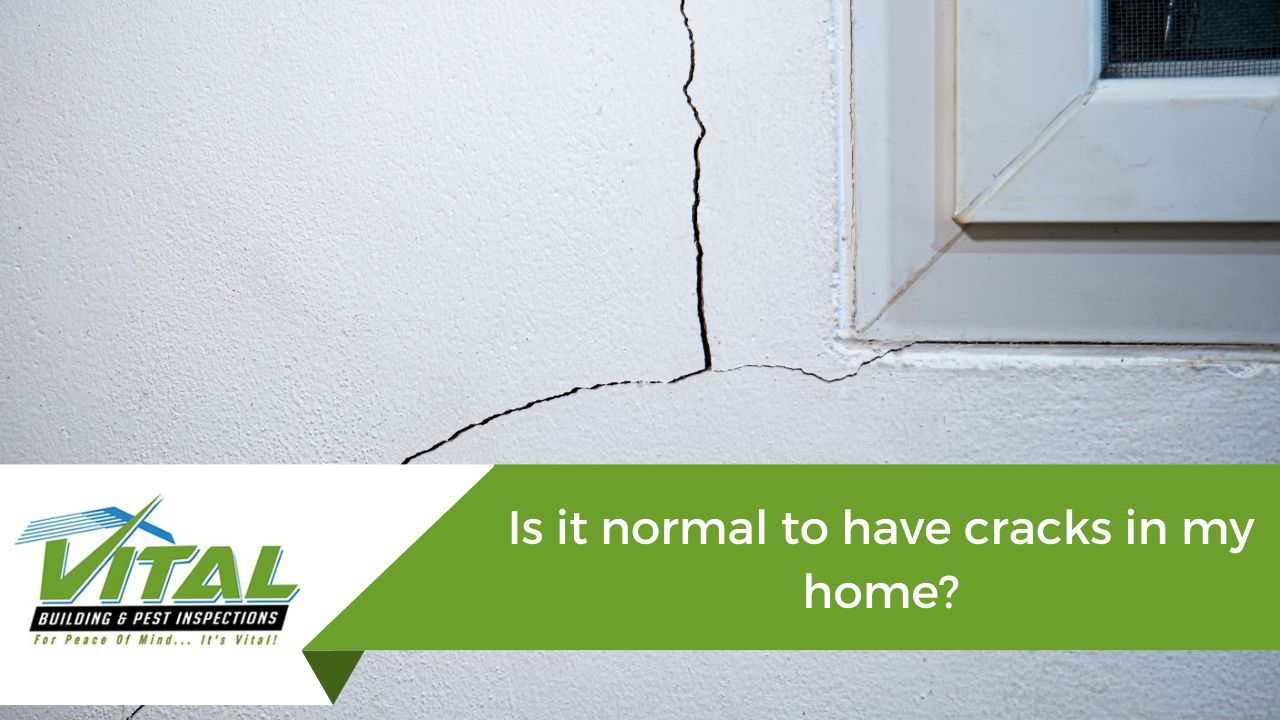Cracks appearing in the walls of homes is a fairly typical problem that Australian homeowners face. There is never a perfect time to discover cracks in your house walls. In the worst case, there are major foundation problems with your house. Undoubtedly, noticing a fresh break in the wall is irritating and perhaps stressful. What does it mean, how serious is it, and do you need foundation repair are likely your questions. It’s not always doom and gloom, though, when a wall is cracked. Minor repairs may occasionally simply be necessary for the house. You shouldn’t try to dodge a wall fracture, either way. Before the issue worsens, it is critical to make a diagnosis.
House walls frequently have cracks, which might be a sign that a structural examination may be necessary. Discovering fissures within your home can indeed be unsettling, that’s why experts are available to help. You can put your trust in us; we recognise that sentiment. At Vital Building Inspections we assist Australian homeowners in identifying the root causes of concerning cracks so they can resume enjoying a safe and secure home.
What causes my house to crack?
Although when they are expertly constructed, most structures eventually acquire cracks over time. Your home may be cracking for the following reasons:
Changes in season
Due to the amount of clay in the soil, the soil type upon which the home is constructed may swell and shrink. Because of the consequences of seasonal changes with rainfall or droughts in accordance, there may be significant differential motion to the footings causing cracks to appear.
The forces of nature
Your building may develop fractures as a result of rain, floods, and wind disasters. This could happen because the earth’s lower layer suddenly shifts. The earth’s vacuum may have collapsed and been supplied with soil from above, which is how this may have occurred. Earthquakes are the most frequent; cracks can appear in a house as a result of the abrupt movement from the quake. After an earthquake, it is advisable to get any fractures checked out in case they are signs of more serious structural damage.


New house
As the structure settles into its foundations, cracks may start to show in a newly constructed home. These tiny fissures won’t spread out over time. Repaint the area after using spackling compound to patch it up. An engineer should be consulted if a crack reappears after being filled.
Old house
In time, older houses will move. Roger Hunt (2015) adds that “traditional buildings were constructed utilsing lime as well as other materials, that allow for some movement of the foundation.” Even though there is no immediate need to be concerned, you should never ignore a crack simply because your property is older. They must always be investigated in event there has been structural breakdown or even in case the crack was brought on by dampness.
Beginning shrinkage
Concrete and other construction materials may initially shrink. This unrecoverable shrinking is typical of concrete slabs and is irreversible. A building’s shrinkage cracks can be minimised during construction using a variety of techniques.
Vegetation
A house’s footings may sustain damage from invasive roots or unusual moisture conditions brought on by nearby trees. The footings shrink or subside as a result of the upward pressure roots that grow underneath them experience as their cross-sectional size increases. The roots of vegetation near footings, which absorb a lot of moisture from the foundation soil, are another frequent source of shrinkage and subsidence.

Leaks from excess moisture and humidity
Dampness and moisture can lead to cracks in addition to leaving the recognisable dark stains on walls and ceilings. These two symptoms typically coexist and need to be investigated, especially if they happened after a flood or a period of intense rain. Cracks and loose plaster can develop from dampness brought on by structural problems and should be fixed using the right materials.

Broken pipes or inadequate drainage
A specific location with high levels of moisture can result from broken pipes or insufficient drainage. The result could be a shrinkage or expansion of the soils, depends on the foundation soils. The foundations of a building are often supported by the soils; therefore, any movement could result in foundation movement and cracking.
Ensure the security of your home’s foundation with Vital Building Inspections!
Calling in the professionals to have a building inspection performed professionally is the best approach to determine whether the cracks within your walls are caused by foundation issues, Vital Building Inspections offers evaluation of your Australian home. Call 0401 012 074 or send an email to our staff to get in touch and receive a free quote.






